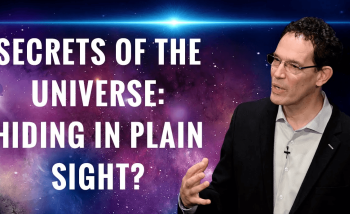The big bang is one of science’s great mysteries, and it seems the plot has thickened thanks to new research that refutes prevailing theories about the birth of the universe.
A classical description of the big bang implies a singularity: a point of infinite smallness, at which Einstein’s theory of gravity – general relativity – breaks down.
To tackle this problem, two proposals were put forward in the 1980s: the “no-boundary proposal” by Stephen Hawking and James Hartle, and Alexander Vilenkin’s theory known as “tunnelling from nothing.”
Each proposal attempted to describe a smoother beginning to spacetime, using quantum theory. Rather than the infinitely pointy needle of the classical big bang, the proposals described something closer to the rounded tip of a well-used pencil – curved, without an edge or tip.
While this view has spawned much research, new mathematical work suggests such a smooth beginning could not have given birth to the ordered universe we see today.
A new paper, co-authored by Perimeter Institute researchers Neil Turok and Job Feldbrugge, with Jean-Luc Lehners of the Albert Einstein Institute in Germany, points out mathematical inconsistencies in the “no boundary” and “tunnelling” proposals.
“The beginning of our universe – if there is one – is one of the big open questions in theoretical physics,” said Feldbrugge, a PhD student at Perimeter Institute. “The no-boundary proposal by Hartle and Hawking and others is an elegant proposal to model the big bang using quantum gravity. Using a new mathematical technique, we can now rigorously investigate this proposal and see what kind of universe it predicts.”
Turok says the previous models were “beautiful proposals seeking to describe a complete picture of the origin of spacetime,” but they don’t hold up to this new mathematical assessment.
“Unfortunately, at the time those models were proposed, there was no adequately precise formulation of quantum gravity available to determine whether these proposals were mathematically meaningful,” Turok said.
The new research, outlined in a paper called “No smooth beginning for spacetime,” demonstrates that a universe emerging smoothly from nothing would be “wild and fluctuating,” strongly contradicting observations, which show the universe to be extremely uniform across space.
“Hence the no-boundary proposal does not imply a large universe like the one we live in, but rather tiny curved universes that would collapse immediately,” said Lehners, a former Perimeter postdoc who leads the theoretical cosmology group at the Albert Einstein Institute.
Turok, Lehners, and Feldbrugge reached this result by revisiting the foundations of the field. They found a new way to use powerful mathematics developed over the past century to tackle one of physics’ most basic problems: how to connect quantum physics to gravity. The work builds on previous research Turok conducted with Steffen Gielen, a postdoc at the Canadian Institute for Theoretical Astrophysics and at Perimeter, in which they replaced the concept of the “classical big bang” with a “quantum big bounce.”
Turok, Lehners, and Feldbrugge are now trying to determine what mechanism could have kept large quantum fluctuations in check while allowing our large universe to unfold.
The new research implies that “we either should look for another picture to understand the very early universe, or that we have to rethink the most elementary models of quantum gravity,” said Feldbrugge.
Added Turok: “Uncovering this problem gives us a powerful hint. It is leading us closer to a new picture of the big bang.”
Further exploration
About PI
Perimeter Institute is the world’s largest research hub devoted to theoretical physics. The independent Institute was founded in 1999 to foster breakthroughs in the fundamental understanding of our universe, from the smallest particles to the entire cosmos. Research at Perimeter is motivated by the understanding that fundamental science advances human knowledge and catalyzes innovation, and that today’s theoretical physics is tomorrow’s technology. Located in the Region of Waterloo, the not-for-profit Institute is a unique public-private endeavour, including the Governments of Ontario and Canada, that enables cutting-edge research, trains the next generation of scientific pioneers, and shares the power of physics through award-winning educational outreach and public engagement.
You might be interested in


Spiralling light from M87’s supermassive black hole reveals strong magnetic fields
November 8, 2023
